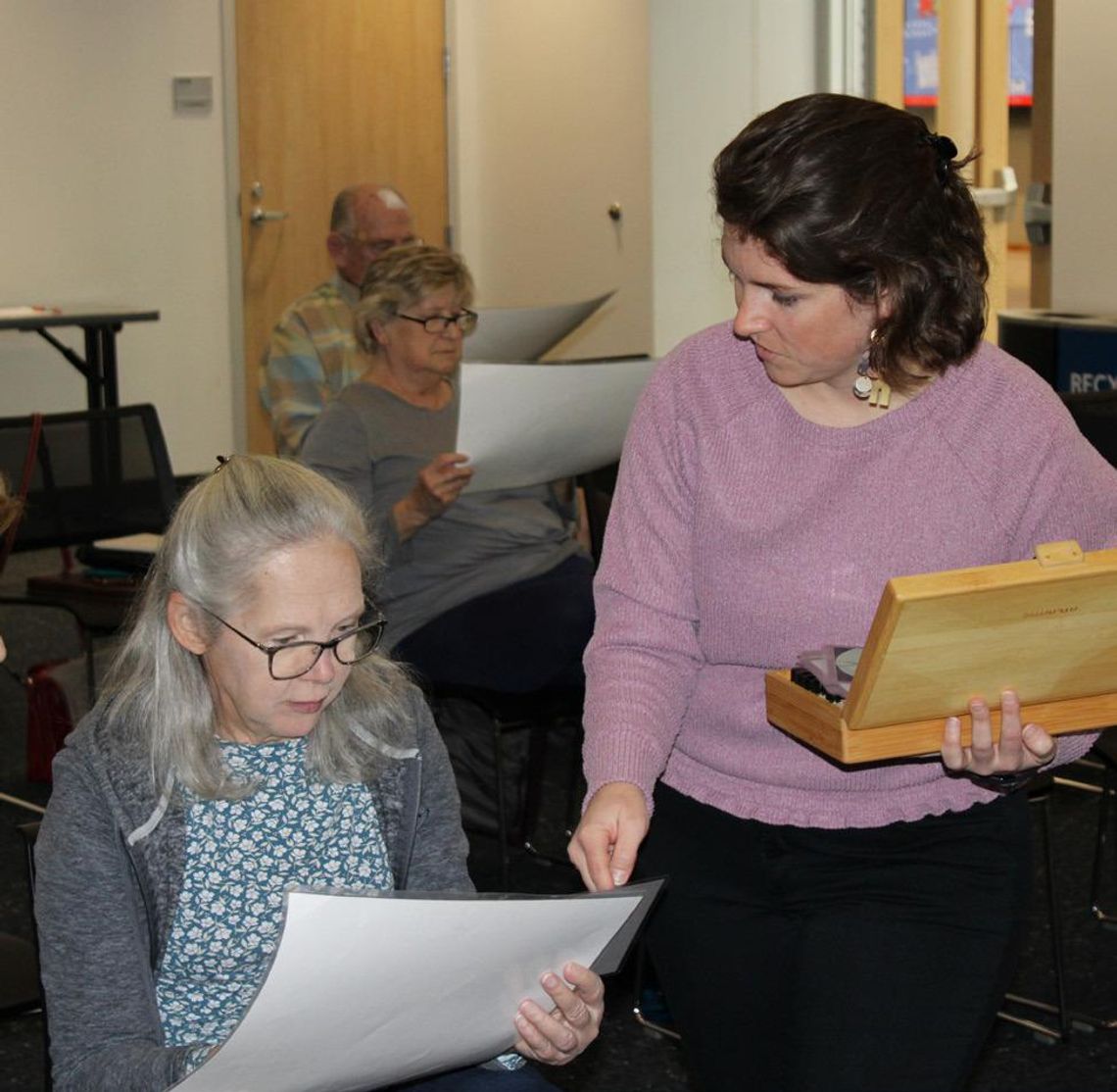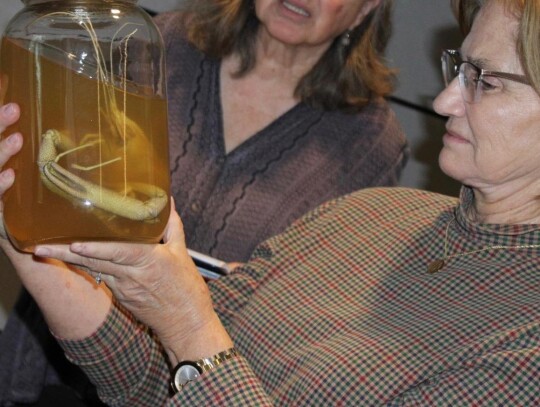Macroinvertebrates in the San Marcos River
When one thinks of critters in the San Marcos River, fish, turtles and, on the occasional terrifying day, water moccasins come to mind. There are also tons of small (but large enough to be seen by the unaided eye), backboneless critters called macroinvertebrates, and Kellie Donajkowski, Edwards Aquifer Research and Data Center education program manager, told a group of curious locals all about the ones in the San Marcos River. This was the fifth course in a lecture series spearheaded by Lifelong Learning Director Marianne Reese that occurred on six consecutive Fridays at the San Marcos Public Library.
Donajkowski said that the macroinvertebrate category encompasses a wide array of creatures, including crawfish, leeches, spiders, mussels, worms, slugs and snails.
“They play a super important role in our ecosystem,” Donajkowski said, noting that macroinvertebrates consume the detritus — dead plants, feces and other debris at the bottom of the river — that would otherwise accumulate. “They are taking the nutrients that are sitting down there and bringing them back into this cycle. Because fish can’t access these nutrients until it’s consumed by something else that they can eat.”
Donajkowski said that the river can be split into different sections: riffles are fast and turbid, pools are still and usually occur at a bend in the river and runs are smooth sections that connect riffles and pools with nothing impeding the flow. She said you can find macroinvertebrates on plants and on or under rocks as well as in the muck at the bottom.
“Where we don’t often find them is in these open water sections because there’s nothing for them to hold on to and nothing for them to hide behind,” Donajkowski said. “Because they’re at the bottom of the food chain, they would get eaten up.”
Donajkowski said it's important to know where to find macroinvertebrates because they serve as bioindicators for water quality testing. Macroinvertebrates have varying degrees of tolerance to water quality issues ranging from sensitive to tolerant. She said that certain sensitive or semi-sensitive species will decline in conjunction with the water quality.
“They’re pretty much immobile,” Donajkowski said. “If something happens in that area … they are stuck there dealing with whatever pollution is happening or changes that are happening.”
Donajkowski kept the class fun and interactive by providing a glimpse into the day in the life of an aquatic scientist. She brought macroinvertebrate specimens for the class to identify using a dichotomous key — a series of yes or no questions that lead you along a chart with various organisms — which is used to identify and count species for water quality testing. The key had indicators under each species that identified them as sensitive, semi-sentive or tolerant.
Donajkowski through TXST’s EARDC teaches kids the same principles that were taught to the Lifelong Learners at the Aquatic Science Adventure Camp, but the camp incorporates hands on experience. More information can be found at this link eardc.txst.edu/camp.
The Lifelong Learning lecture series as a whole involved six separate and unique topics. The first topic, The Creation and Early History of the U.S. Supreme Court was taught by Joleene Snider, Texas State University senior lecturer emeritus for the Department of History, on Feb. 5. Andrea Banzatti, Texas State University assistant professor of physics, discussed his studies on the formation of terrestrial planets using the NASA James Webb Space Telescope data on Jan. 12. Dr. Steven Beebe, a distinguished professor emeritus of communication for both Texas State University and the Texas State University System at large, lectured on How to Communicate Like C.S. Lewis on Jan. 19. Sarah Hirneisen, Texas State University School of Art and Design lecturer, taught “Mark of the Hand: Sculptural Explorations” on Jan. 26. Snider taught another course on Britt Johnson to celebrate Black History Month on Feb. 9.










